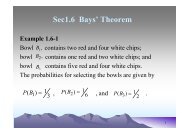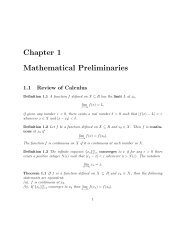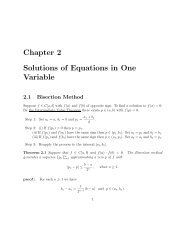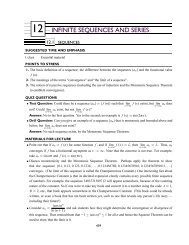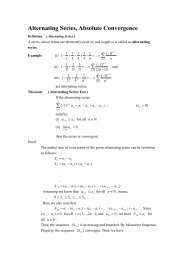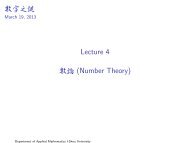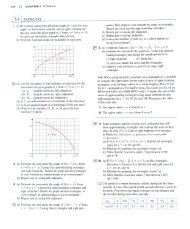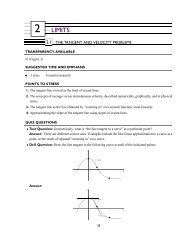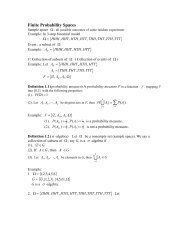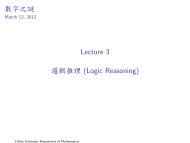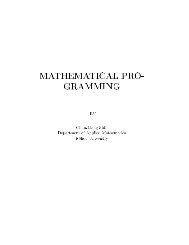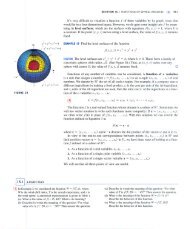9 FURTHER APPLICATIONS OF INTEGRATION
9 FURTHER APPLICATIONS OF INTEGRATION
9 FURTHER APPLICATIONS OF INTEGRATION
You also want an ePaper? Increase the reach of your titles
YUMPU automatically turns print PDFs into web optimized ePapers that Google loves.
9.5 PROBABILITY<br />
TRANSPARENCY AVAILABLE<br />
#18 (Figure 5)<br />
SUGGESTED TIME AND EMPHASIS<br />
1 class Optional material<br />
POINTS TO STRESS<br />
1. The definition of a probability density function, and how it can be used to determine P (a ≤ x ≤ b).<br />
2. The definition of a mean, algebraically and geometrically.<br />
3. The uses of the normal distribution.<br />
QUIZ QUESTIONS<br />
• Text Question: Estimate the probability that a North American male is precisely six feet tall.<br />
Answer: 0<br />
• Drill Question: Assume that the probability density function of a continuous random variable X is given<br />
1<br />
by f (X) =<br />
π ( 1 + X 2). What is the probability that 0 < X < √ 3?<br />
Answer: 1 π<br />
∫ √ 3<br />
0<br />
dx<br />
1 + x 2 = 1 3<br />
MATERIALS FOR LECTURE<br />
• Describe Buffon’s needle problem as follows (see Problem 11 in Problems Plus after this chapter):<br />
In a famous 18th-century problem, known as Buffon’s needle problem, a needle of length h is dropped<br />
onto a flat surface (for example, a table) on which parallel lines L units apart, L ≥ h, have been drawn.<br />
The problem is to determine the probability that the needle will come to rest intersecting one of the lines.<br />
Assume that the lines run east-west, parallel to the x-axis in a rectangular coordinate system (as in the<br />
figure below).<br />
L<br />
y<br />
h<br />
¬<br />
h sin ¬<br />
y<br />
L<br />
h<br />
y=h sin ¬<br />
¹ _2 ¹<br />
¬<br />
Let y be the distance from the “southern” end of the needle to the nearest line to the north. (If the needle’s<br />
southern end lies on a line, let y = 0. If the needle happens to lie precisely east-west, let the “western”<br />
end be the “southern” end.) Then 0 ≤ y ≤ L and 0 ≤ θ ≤ π. Note that the needle intersects one of the<br />
lines only when y < h sin θ. Now, the total set of possibilities for the needle can be identified with the<br />
rectangular region 0 ≤ y ≤ L, 0≤ θ ≤ π, and the proportion of times that the needle intersects a line is<br />
511



